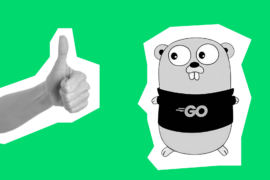Choosing a right pricing model is one of the cornerstones of a successful project. But how to make a right choice? Let’s find out!
As we have described before, all existing pricing models can be cut down to 3 major types.
They are:
- Fixed Price
- Time & Material
- Dedicated Team
So how to choose the right one for your project? To make it easier and more down to earth, this time we came up with 3 business cases of creating an online store. Now let’s a have a look at what they are and what pricing models suit them best.
Case 1. Clear Picture
You want to create a small online store for your local family business. You have a clear understanding of what your future online store should look like, what features it would have, what needs to be developed first and what your priorities are. Besides, you already know the budget you can allow spending on it. You are planning to go with Waterfall methodology.
It is extremely important for you to finish by the certain date set, you can compromise certain features not to be included in Phase 1, but you definitely can’t spend a cent more on development other than originally drafted.
Solution:
This is the case, where Fixed Price model will suit your needs best. It works pretty well for a small project with a little uncertainty and lets you have a strong control over the budget spent.
The main disadvantage of this pricing model is that the bigger the project and level of uncertainty are, the bigger are the risks of the wrong estimates, change requests and not hitting the deadline.
Remember, Fixed Price (especially together with Waterfall methodology) implies a minimum of changes during the development process, which is never the case for projects bigger than 4-6 months. So if you are in doubts or not ready to spend a third of your budget on Phase 0, which is a bare investigation, it’s better to stay away from it for your own safety.
Case 2. Clueless Driver
You have come up with an idea that is going to totally change eCommerce business. You want to develop this new type an online store, yet no sure about some of the details.
Time is money, you can’t wait till somebody else will develop a store like that. You need it as soon as possible and are flexible with some features and budget limits. You will probably go for Agile methodology as it fits best your goals.
Solution:
If you don’t know the final scope and are really pressed for time, go for Time&Material pricing plan. It fits Agile best and lets you save precious time adjusting the final project while it is being developed.
The great thing about it is that you can decide yourself when you are ready to show the world your brand new project and you don’t have to think about every single detail in advance. And if you changed your mind about some functionality, it is not a problem at all, you can change it right in the next sprint.
A negative side of this plan is that because of a high level of uncertainty, it is extremely hard to tell for sure, how much the project will cost you.
Case 3. Long-term Perspective
You are planning to create an online store and have big plans for its development. After the release of MVP, you are planning to keep working on advanced features and later release a mobile app and whatever not.
You want people working on your store to know the project well and love it as much as you do.
Solution:
In this case, go for a dedicated Team. Basically, it is a particular case of Time&Material model. It guarantees that you will have some dedicated developers, which would be available for you whenever you need them. It works really great for long projects with a number of phases planned. To say nothing that this way you will provide yourself with most knowledgeable developers possible and won’t have to waste time on onboarding every time you need something to be fixed. Besides that, you can ask for a discount on this pricing model.
As you see, choosing a pricing model is defined by a number of factors, including project size, methodology, budget restrictions and, of course, your values and strategy. And what model do you choose most often? Share with us in the comments!



